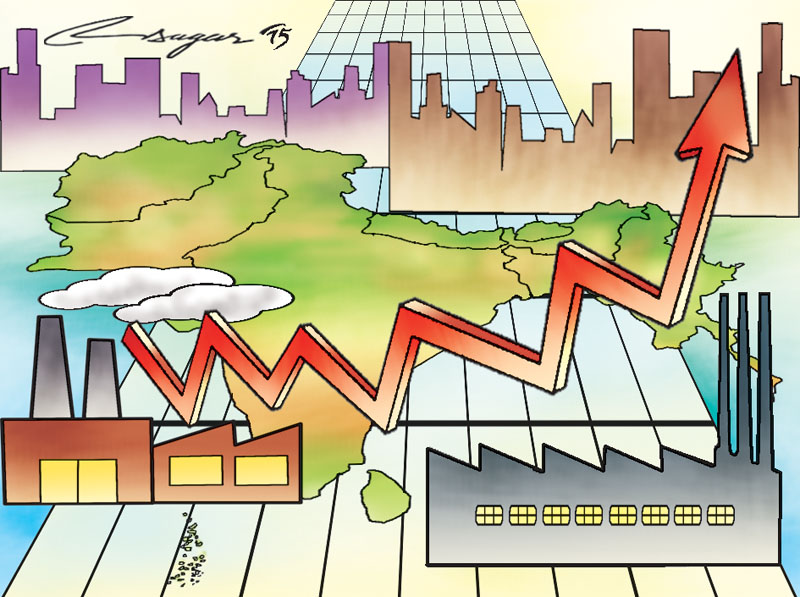Greater economic integration
While governments can put in place policies, regulations, institutions and infrastructure that promote greater integration, there is also an important role to play for the private sector, consumers, civil society and others
If you send a container today from Delhi in India to Dhaka in Bangladesh it has to take a circuitous route by land and sea through Colombo in Sri Lanka. This takes 35 days. If it could go directly by road, it would take five days in all.
Poor transport links are just one of many examples in South Asia that illustrate a bigger problem: it is one of the least economically integrated regions in the world. This lack of integration is holding back the region, which is home to 40 per cent of the world’s poor.
South Asia has already made great strides on the road to closer economic links among its countries and is about to take even bigger strides in the coming years.
Here are three areas where the biggest gains can be made in the next five years:
The biggest potential is in energy. Today, South Asian countries remain highly dependent on coal and imported oil despite considerable energy potential within the neighborhood. Importantly, there are significant synergies between South Asian nations in the energy sector. For instance, given the region’s geography, one country can have an energy surplus just when another has a shortage. But developing this potential is only profitable if surplus energy can be sold across the border. At the moment, the region is not exploiting enough of its energy resources -- less than 20 per cent of the region’s hydro power potential has been realized so far. If energy-rich nations shared their power with their neighbors, South Asia could double its electricity transmission connectivity and trade by 2020. This would benefit nearly 400 million of South Asia’s people who lack reliable access to electricity, and give a boost to businesses which cite energy shortages as their biggest drag on growth.
The good news is that energy projects between countries have already become a reality. A Bangladesh-India power deal has been inked and more deals elsewhere are planned.
A second area of great potential is trade. At the moment, limited transport connectivity, onerous logistics, and regulatory impediments make it more expensive to trade within South Asia than with other regions. The result is that South Asia’s intraregional trade is the lowest in the world, making up less than 5 per cent of its total trade, compared to 25 per cent within the Association of South East Asian States (ASEAN). The returns on changing this for the better could be huge. If barriers to trading with neighbors were removed, intra-regional trade in South Asia could increase from the current $28 billion to $100 billion over the five years.
Who would benefit from more open trade? Consumers – the people of these countries - will likely enjoy greater choice, better quality, and lower prices with goods from neighboring countries. This could lower the cost of living for many: think of cheaper consumer goods flowing to poor families, reducing their monthly expenditures. In fact, a recent study shows that intra-regional tariff reduction would lead to an approximate gain of $2 billion a year for South Asian consumers, including in the smaller countries.
In promoting regional integration, one should be aware that there will be losers as well as winners from greater transit and trade integration. Some will adapt. Others will fail. Opening borders for foreign trucks will mean bigger infrastructure costs and the risk that transiting goods may be sold tax free and hurt domestic producers. Initiatives may be needed to help struggling businesses adjust to a more competitive and open trade regime.
A third area of great potential in the next five years is cooperating over shared waterways. The region is traversed by some of the world’s biggest rivers. But there has been little progress to date on joint management of these resources. With its partners, the World Bank is working to bring governments together to address common issues for the Brahmaputra, Ganges, Indus as well as for the Sunderbans delta. The World Bank Group is supporting efforts to improve the base of knowledge and institutional capacity for better management of shared rivers, including for wildlife protection.
While governments can put in place policies, regulations, institutions and infrastructure that promote greater integration, there is also an important role to play for the private sector, consumers, civil society and others. They all can benefit from more energy, freer trade, and shared natural resources, and need to be engaged in this process.
As with any new venture, a number of questions are bound to arise: What will each country gain from greater integration? Will it be safe to open up borders to foreign trucks? Will there be winners and losers? And, how can concerns be addressed?
These are some of the questions that the upcoming South Asia Economic Conclave should look to address. This summit level meeting between the private sector and governments – being held in Delhi today - will seek to recommend initial actions to promote deeper regional economic cooperation in goods, services, investment and energy, and to follow up on the recommendations by establishing task forces. Making regional integration a reality is everyone’s business. While the challenges may be large, the rewards of a more integrated region can be even larger for all the countries of the region. The time to act is now.
The author is Vice President of the South Asia Region of the World Bank






